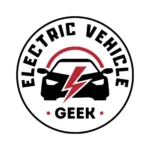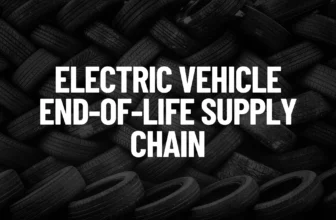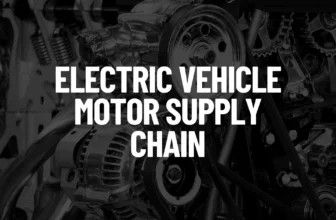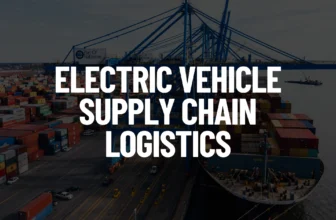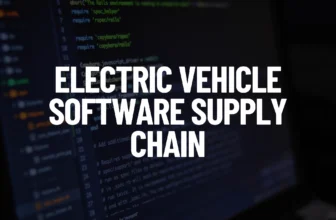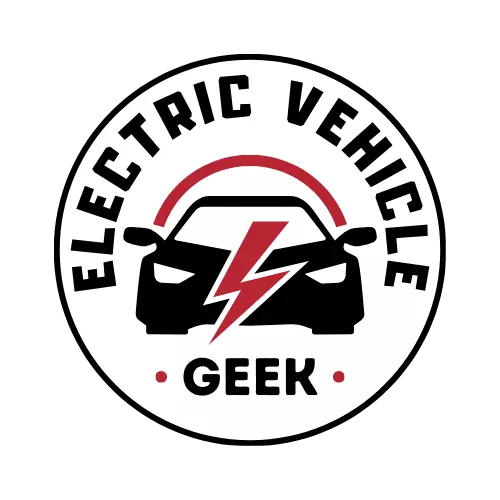The electric vehicle charger supply chain is a sub-supply chain in the electric vehicle supply chain that involves various participants, each playing a crucial role in the production, distribution, installation, and maintenance of EV charging infrastructure.
The electric vehicle charger supply chain includes various participants with different roles, including material suppliers, manufacturers, distributors, regulators, and service providers.
Table of Contents
- Components of the EV Charger Supply Chain
- Types of Electric Vehicle Chargers
- Key Participants in the EV Charger Supply Chain
- Market Growth of Electric Vehicle Charger Supply Chain
- Conclusion
Components of the EV Charger Supply Chain
The manufacturing process for EV chargers involves several critical components, each with a specific role in ensuring the efficient operation of charging stations:
- Power Electronics Assembly: The core component responsible for supplying power to the EV’s onboard battery charger.
- Charge Controller: Manages charging functions, such as turning the charger on and off, metering power usage, and storing operational data.
- Network Controller: Provides interconnectivity to broader networks, enabling remote monitoring, device control, and user access management.
- Cable and Connector: Links the charger to the vehicle. Common connector types include CCS, CHAdeMO, SAE J1772, and IEC 60309.
- Electric Vehicle Charger Enclosures: Made from fire-retardant materials, these protect internal components and ensure compliance with safety standards.
Types of Electric Vehicle Chargers
Electric vehicle chargers are categorized based on power levels and charging speed:
AC and DC Charging
- AC Charging: Offers power up to 22 kW, with some exceptions reaching 44 kW. AC chargers are suitable for residential and light commercial applications.
- DC Charging: Primarily for fast charging, with outputs ranging from 50 kW to over 400 kW for ultra-fast charging. These chargers are often found at public charging stations and along highways.
Electric Vehicle Charging Levels
- Level 1 Charging: Utilizes a 120-volt outlet and provides the slowest charging rate. It is ideal for overnight charging at home but may not be practical for larger batteries or frequent use.
- Level 2 Charging: Operates with a 240-volt outlet, offering faster charging compared to Level 1. Level 2 chargers are common in homes, workplaces, and public locations.
- Level 3 Charging (DC Fast Charging): Employs high-voltage outlets for rapid charging, though not all vehicles support this level. Level 3 chargers significantly reduce charging times and are essential for long-distance travel.
OEM vs. Aftermarket Chargers
- OEM Chargers: Provided by vehicle manufacturers, often integrated into their supply chains.
- Aftermarket Chargers: Purchased from third-party suppliers, offering additional options for EV owners.
Key Participants in the EV Charger Supply Chain
The EV charger supply chain includes EV charger manufacturers, distributors and installers, certified installers, Charge Point Operators (CPOs), network service providers, utilities and grid operators, project developers and investors, and government agencies and regulatory bodies.
EV Charger Manufacturers
Key Participants in the EV Charger Supply Chain:
Component Manufacturers
- Power Electronics Assemblers: These companies are responsible for producing the core components that convert electrical power for EV charging.
- Charge Controller Manufacturers: These produce the devices that manage the charging functions of the station, metering power usage, and managing data.
- Network Controller Manufacturers: These manufacture the devices that provide the interconnection of the charging station to the broader network, enabling communication, monitoring, and control.
- Cable and Connector Suppliers: These companies produce the cables and connectors that link the charging station to the vehicle. These components must adhere to specific standards and form factors.
- Enclosure Manufacturers: These firms produce protective housings for charging stations, ensuring they are made of fire-retardant materials.
- Charging Station Manufacturers: These companies assemble the various components into complete EV charging stations. Some manufacturers produce both DC Fast Chargers and Level 2 chargers for public and private use.
Software and Connectivity Providers
Software and connectivity providers play a pivotal role in the EV charging ecosystem by developing and managing the technological backbone of charging networks. These companies create platforms and tools that enable:
- Station Operations: Monitoring and managing the functionality of charging stations in real time.
- Payment Systems: Facilitating seamless and secure transactions for users.
- User Access Control: Enabling features like account management, authentication, and membership services.
- Data Analysis: Offering insights on usage patterns, energy consumption, and system performance to optimize operations and support decision-making.
This integration of software and connectivity ensures that EV charging infrastructure is not only available but also reliable, secure, and user-friendly. Collaboration between software providers, hardware manufacturers, and infrastructure operators is critical to maintaining a cohesive, scalable system. Such partnerships are instrumental in driving the efficiency and accessibility needed for the widespread adoption of electric vehicles.
Distribution and Installation of EV Chargers
The distribution and installation of EV chargers form a crucial link in the EV charger supply chain, involving key participants such as charge point operators (CPOs), manufacturers, automakers, and certified installers. Ensuring an efficient setup requires addressing several challenges, including the shortage of trained professionals.
Charge Point Operators (CPOs)
CPOs play a pivotal role in the deployment and management of EV charging infrastructure. These operators can choose between two primary business models:
- Asset-Light Model: In this approach, CPOs focus on selling, installing, and managing EV chargers on behalf of third parties. This model minimizes financial risk and leverages partnerships to expand charging networks efficiently.
- Asset-Heavy Model: Here, CPOs take on the financial responsibility of owning and operating their charging networks. This approach provides greater control over operations and potential for long-term revenue generation but requires significant upfront investment.
Certified EV Charger Installers
Certified EV charger installers are licensed professionals who specialize in the installation of electric vehicle charging equipment. They play a crucial role in ensuring that chargers are installed safely, efficiently, and in compliance with local electrical codes and regulations.
Installation Challenges and Solutions
The installation of EV chargers presents unique challenges, but targeted solutions are driving progress:
Shortage of Certified Installers
The rapid expansion of the EV market has created a demand-supply gap for skilled charger installation professionals. This shortage limits the pace of charging network deployment.
Solution: To address this, manufacturers and automakers have introduced specialized training programs for electricians and installers. These initiatives equip professionals with the expertise to install and maintain modern EV charging technologies safely and efficiently.
Grid Levels and Integration
EV chargers operate across various levels of the distribution grid:
Residential EV Charger Installations
These chargers consist of level 1 and Level 2 EV chargers and are typically used for private or business purposes and integrate with existing electrical setups, certified EV chargers dominate this stage, however, inspection and permitting are done by their parties such as local building authorities.
Public Charging Stations Installations
Public EV chargers include Level 3 EV chargers, Level 3 chargers also called public EV chargers installations cater to widespread EV usage and often require dedicated infrastructure planning. Due to the investments required and the complexity of installations, this stage of installation is mainly done by EV charger manufacturers and Automakers such as Tesla.
Site Assessment and Preparation
Effective site preparation is critical. This includes evaluating the electrical capacity, ensuring compatibility with local grid requirements, and preparing the physical site for charger installation.
Maintenance and Servicing
Regular maintenance of public EV chargers is essential to ensure reliability, user safety, and compliance with industry standards. Service contracts, real-time monitoring systems, and proactive issue resolution play a vital role in keeping chargers operational and user-friendly.
Installation and Maintenance Providers are responsible for the physical installation of charging infrastructure and ongoing maintenance of charging stations. This may involve working with utilities and municipalities to coordinate work, especially for commercial EV chargers.
Network Service Providers
Network service providers provide the technology to ensure remote and online booking of charging stations, which is crucial for establishing smart charging. They also often provide data to grid operators.
Aggregators
These act as a third party between energy suppliers and EV users, coordinating charging schedules and managing information flow between grid operators and EV owners.
Utilities and Grid Operators
Utilities and grid operators are also part of the electric vehicle charger supply chain, they provide the electrical power needed for EV charging and manage the distribution network. They also play a role in enabling smart charging and managing the grid impacts of EV charging.
Project Developers and Investors
Project developers and investors are essential to the EV charger supply chain, providing the capital needed to deploy charging infrastructure. Developers coordinate with manufacturers, utilities, and authorities to ensure project feasibility, while investors fund initiatives ranging from residential to large-scale public installations.
The electric vehicle charger supply chain relies on these stakeholders for financial and operational support, and in return, developers and investors profit through usage fees, government incentives, and long-term market growth. Their contributions are vital for scaling EV infrastructure and supporting the transition to sustainable transportation.
Government Agencies and Regulatory Bodies
These set the standards and regulations for the EV charging infrastructure, and offer incentives to encourage the deployment of EV chargers.
Standards and Regulations of EV Chargers Supply Chain
Safety is paramount in the EV charger supply chain. Stations must adhere to standards protecting against electric shock, reverse power flow, and other hazards. Regular electrical safety assessments are essential.
Due to the risk associated with EV chargers and for comparability reasons, EV charging equipment in an EV charger supply chain must comply with stringent standards to ensure safety and interoperability. Key standards include:
- IEC 62196: Defines plugs and connectors for conductive charging.
- IEC 61851-1: Stipulates insulation resistance values for charging stations.
- SAE J2847: Addresses communication between vehicles and off-board DC chargers.
- GB/T 20234: Establishes connection standards specific to China.
Third-party inspections play a crucial role in ensuring that EV charging stations meet safety standards, regulatory requirements, and operational efficiency. They can include:
- Electrical safety testing
- Charging performance testing
- Compatibility testing
- Communication protocols testing
- Electromagnetic compatibility (EMC) testing
- Insulation resistance testing
- Leakage current testing
- Grounding resistance testing
Market Growth of Electric Vehicle Charger Supply Chain
The demand for EV chargers is growing rapidly alongside the adoption of electric vehicles. Key trends include:
- The Biden Administration’s goal of deploy 500,000 charging stations across the U.S. by 2030.
- As of mid-2022, the U.S. had 137,907 EV charging ports, including Level 2 and DC fast chargers.
- Global EV charging points increased to 5.2 million by 2018, reflecting a 44% growth from the previous year.
Conclusion
The EV charger supply chain plays a pivotal role in supporting the global transition to electric vehicles. By integrating advanced manufacturing, efficient distribution, robust standards, and strategic market growth, this supply chain ensures that EV owners have access to reliable, safe, and fast charging options. As the EV market continues to expand, so too will the infrastructure that powers it, driving innovation and sustainability worldwide.
As an expert in the electric vehicle charger supply chain, your insights are invaluable to enhancing the quality of this blog.
I invite you to contribute your expertise, real-world experiences, and case studies to explore the complexities of the EV charger supply chain. Together, we can uncover actionable insights, innovative solutions, and best practices that will drive the industry toward greater efficiency and sustainability.
If my content has been beneficial to your work within the EV charger supply chain, a letter of recommendation would be greatly appreciated. Your support will help me refine my contributions and foster the growth of the industry.
Let’s collaborate to shape the future of the EV charger ecosystem and expand the collective knowledge that propels the industry forward.
Feel free to reach out to me directly at james@electricvehiclegeek.com.
Thank you for your engagement and being a key part of this journey!
